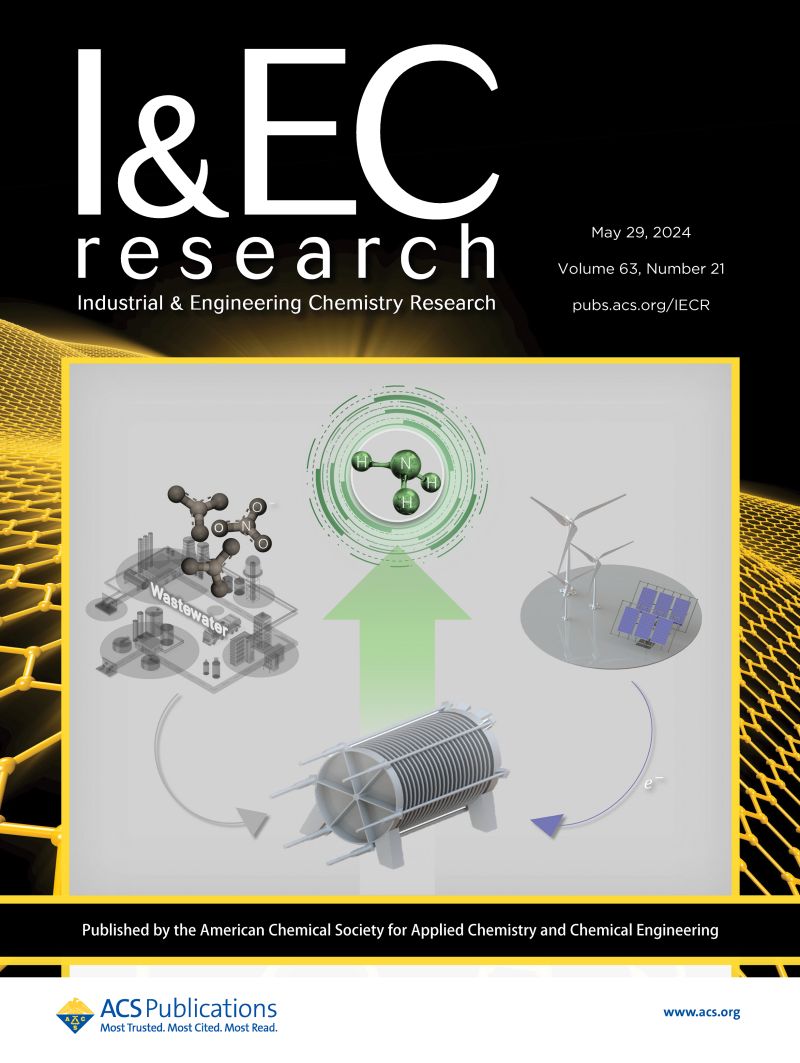Effects of Internal Electron Donor on the Distribution of Active Centers and Their Intrinsic Reactivities in Propylene Polymerization with MgCl2-Supported Ziegler–Natta Catalysts
IF 3.8
3区 工程技术
Q2 ENGINEERING, CHEMICAL
引用次数: 0
Abstract
Internal electron donors (Di) play crucial roles in MgCl2-supported Ziegler–Natta catalysts for regulating stereoselectivity. In this work, propylene polymerization was conducted using four TiCl4/Di/MgCl2-type Z–N catalysts containing different Di ions and a TiCl4/MgCl2 blank catalyst (Cat-B) under the same conditions. For each catalyst, the distribution of three groups of active centers producing PP chains with low, medium, and high isotacticity and their kp values were determined based on quench-labeling the propagation chains and extraction fractionation of the polymer product. Using bidentate internal donors (phthalate, 1,3-diether, and diol ester) as Di led to a sharp increase in the total number of active centers ([C*]/[Ti]), while adding ethyl acetate (Cat-A) caused no change in [C*]/[Ti] as compared with Cat-B. The catalysts containing phthalate (Cat-P), 1,3-diether (Cat-E), and diol ester (Cat-O) had similar active center distribution (expressed as fractions of active centers forming atactic (Ca*), medium isotactic (Cm*), and isotactic (Ci*) polypropylene). In contrast, Cat-A and Cat-B had more Ca* and less Cm*. The influences of Di on intrinsic reactivities (kp values without distortion by monomer diffusion limitation) were more evident than those on the active center distribution. Though Di exerted weak influences on the kp of Ca*, it strongly influenced the kp of Cm* and Ci*. kp values of Cm* centers in the four catalysts containing Di (Cat-P, Cat-E, Cat-O, and Cat-A) were close to each other, but Cat-B had smaller kp values of Cm* and large kp values of Ci*. Judging by the kp of Ci* and Cm* centers and the characteristics of Di-MgCl2 interactions, the catalysts studied in this work can be divided into three categories: (1) Cat-P and Cat-A with medium kp of Ci*; (2) Cat-E and Cat-O with large kp of Ci*; and (3) Cat-B with large kp of Ci* but very small kp of Cm*. The comparative studies on different Di have provided enlightening information on the mechanism of internal donor effects in supported Z–N catalysts.

求助全文
约1分钟内获得全文
求助全文
来源期刊

Industrial & Engineering Chemistry Research
工程技术-工程:化工
CiteScore
7.40
自引率
7.10%
发文量
1467
审稿时长
2.8 months
期刊介绍:
ndustrial & Engineering Chemistry, with variations in title and format, has been published since 1909 by the American Chemical Society. Industrial & Engineering Chemistry Research is a weekly publication that reports industrial and academic research in the broad fields of applied chemistry and chemical engineering with special focus on fundamentals, processes, and products.
 求助内容:
求助内容: 应助结果提醒方式:
应助结果提醒方式:


